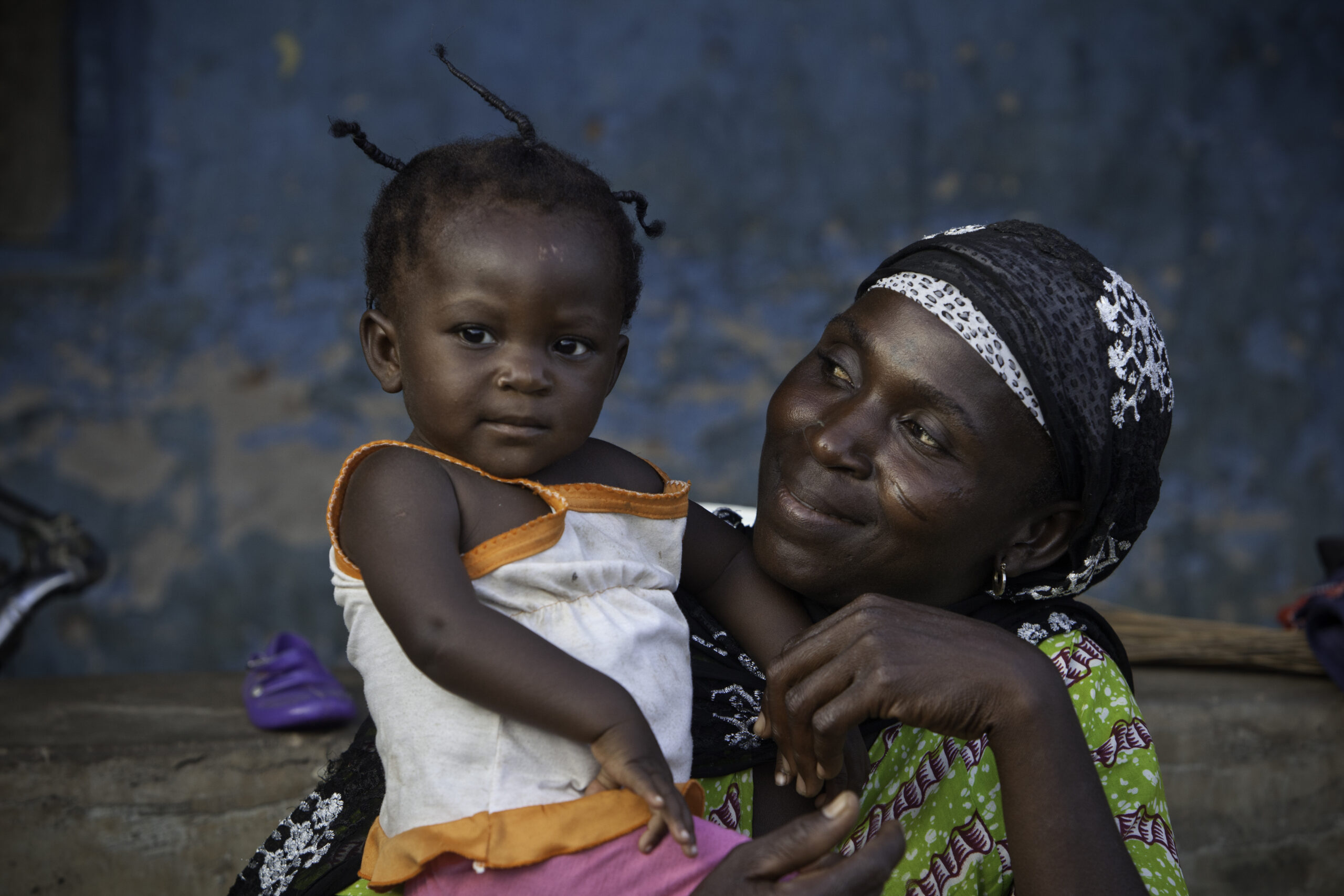
A switch for sustainability in Ghana’s rotavirus vaccination program

Photo: A mother holds her child in Kurawarakura, Ghana. By switching to a new, more affordable rotavirus vaccine, decision-makers in Ghana aim to improve the sustainability of its vaccination program to continue protecting children from severe diarrhea. PATH/Evelyn Hockstein
Many view Ghana’s immunization program as a model for the African region. In 2012, the country successfully introduced four new vaccines in the same year—pneumococcal conjugate, rotavirus, measles second dose, and meningococcus group A (campaign)—with support from Gavi, the Vaccine Alliance. The program has maintained high vaccine coverage rates for routine immunizations for many years. Our government clearly supports the fact that vaccines are important lifesaving tools that improve the health and well-being of our children and communities.
Ghana is now in the Gavi preparatory transition phase and, as such, its co-financing contribution steadily increases by 15% every year. Once Ghana enters the accelerated transition phase, the country’s contribution will quickly ramp up to fully fund all vaccines in the program after five years. As the Chair for Ghana’s National Immunization Technical Advisory Group (NITAG), I have led a number of discussions about the best ways to sustain our country’s successful routine vaccination coverage as we transition away from Gavi support.
As the NITAG considers different options and informed data to support this transition, we determined that rotavirus vaccination was one area where we could make a change now to prepare for the future. Ghana introduced ROTARIX® in 2012, and we have reported very high coverage: above 90% in 2018. Last year, the NITAG supported and endorsed the recommendation by the Ministry of Health to switch to using ROTAVAC® in our immunization program. We determined ROTAVAC would better meet Ghana’s needs, partly due to the vaccine’s lower price and smaller cold chain space. Gavi approved our switch decision, and this month, health centers are beginning to gradually switch to administering ROTAVAC as districts use up their ROTARIX stock.
A new, lifesaving vaccine against deadly diarrhea
Rotavirus is the leading cause of severe diarrheal disease in infants and young children worldwide. Unlike the bacteria and parasites that cause other forms of diarrhea, rotavirus cannot be prevented by improvements in water quality, hygiene, and sanitation. Because of this, vaccination is the best way to protect children from rotavirus and the deadly, dehydrating diarrhea that it can cause.
ROTAVAC was one of two new rotavirus vaccines that obtained prequalification by the World Health Organization in 2018, a distinction that makes vaccines more readily available for use in low-resource countries. Ghana is the second country in Africa to introduce ROTAVAC into its national immunization program and the first Gavi country to elect to switch to one of the newly prequalified rotavirus vaccines.
An educational opportunity for the African region and the world
Because ROTAVAC is currently used in only a few other immunization programs, this switch provides an important opportunity to inform other countries in the region and globally about the economic and sustainability implications of switching to a new rotavirus vaccine. As Ghana slowly transitions to using ROTAVAC, PATH will be working with the Ministry of Health and local partners to examine the economic implications of the switch, including updating prior rotavirus vaccine cost-effectiveness estimates.
I was one of the partners on the original cost-effectiveness analysis, conducted by PATH in partnership with Noguchi Memorial Institute for Medical Research and University of Ghana in 2016, which found rotavirus vaccine to be cost-effective in Ghana compared to no vaccination. In 2018, PATH and partners reexamined those findings to account for the two newly prequalified rotavirus vaccines. This reevaluation affirmed the cost-effectiveness of rotavirus vaccination overall, but it also highlighted the sensitivity of the projected cost-effectiveness of different products to small changes in service delivery costs, which were largely unknown for the new vaccines. With primary data collected from our new project, we will be able to resolve the previously uncertain cost parameters. We will also be able to adjust data inputs to reflect current ROTAVAC product characteristics and Ghana’s financing situation.
As ROTAVAC is considered for introduction by more countries, generating evidence on the related costs and cost-effectiveness of changing vaccine products in Ghana will be helpful in informing other countries in similar situations. In addition, as more countries are scheduled to transition out of Gavi support in the coming years, the example of Ghana should provide insightful lessons when considering financial sustainability of the immunization program by rationalizing product choice and exploring budget impact well before full transition from Gavi support. By acting preemptively based on the best available evidence, we can help ensure children continue to stay protected from rotavirus diarrhea in the long term.


